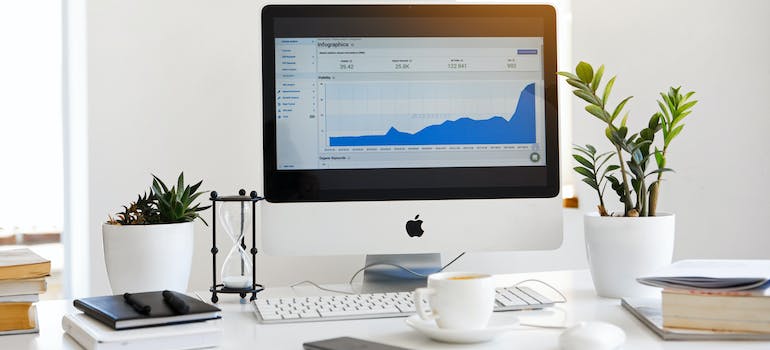Relocating your work environment doesn’t sound much more complex than your regular relocation. However, there are important differences to consider. For example, if you make a mistake while moving your home office, considering that you need it for work, it can cost you a lot more time and effort later on. You need to move quickly and effectively, without the risk of missing out on your work, unless you are moving during a break. In any case, a helpful and thorough guide to follow can be a huge advantage in a situation like this one, as trusted movers can too. That is why the Verified Movers moving platform is here, to provide you with many options regarding moving services and to be your guide through this moving process.
The Initial Assessment
Before you start packing up your home office, taking a moment to assess your workspace can make the moving process much easier. Go through your files, equipment, and office supplies to decide what truly needs to be moved. Some items might be outdated or no longer necessary for your work, so consider donating, recycling, or discarding them. This step not only reduces the number of items you’ll have to move, but it also gives you a chance to declutter and start fresh in your new office space.

After you’ve determined what stays and what goes, make a list or spreadsheet to keep track of important items. Having a detailed inventory list in the organization process also helps ensure that nothing essential gets misplaced during the move. This initial assessment is the cornerstone upon which the rest of your moving strategy will be built, so invest time and thought into getting it right.
Creating an Inventory Before Moving Your Home Office
Once you’ve completed the initial assessment of your workspace, the next step is to create an inventory. This moving checklist should include all the items you plan to move, organized by category—for example, electronics, office supplies, and documents. The inventory serves as a reference point, helping you keep tabs on your belongings and aiding in the labeling process later on. Moreover, a well-documented inventory can be invaluable in case of loss or damage, providing a record for insurance purposes.
Packing Supplies and Essential Packing Techniques
Before you begin the physical process of packing, it’s important to gather all the supplies you’ll need. You should obtain:
- sturdy boxes of various sizes
- bubble wrap for fragile items
- packing tape
- labels or markers for identification
Having the right supplies on hand can make the difference between a chaotic move and one that proceeds without major hiccups. Preparing in advance allows you to focus on the task at hand, rather than making last-minute runs to the store.

Safeguarding your valuable electronics
When moving your home office, the proper handling of electronic equipment like computers, monitors, and printers is of utmost importance. It’s advisable to use original packaging if available, as these boxes are designed to protect the equipment. If that’s not an option, wrap each electronic device in bubble wrap or anti-static foam and place it in a box with ample padding.
Remember to disconnect all cables and accessories, labeling each one so you know where it belongs when setting up in your new space. Properly securing your electronics can prevent costly damage and make the process of re-establishing your workspace more straightforward.
Handling important paperwork securely
When moving your home office, managing your important documents is a key concern. These could include contracts, client information, and financial records. Consider using lockable file boxes to secure these sensitive papers, and keep them separate from other items to easily locate them later. You might also want to digitize essential documents as an added precaution and store them in a secure cloud service or external hard drive. This ensures you have backups and reduces the risk of crucial information getting lost or damaged during the move.
Work essentials
One often overlooked aspect of moving a home office is the identification and separate packing of work essentials—those items you’ll need right away to resume work in your new space. These might include:
- your laptop
- phone charger
- key documents
- even a basic set of office supplies like pens and notepads
Pack these items in a clearly labeled box or bag that’s easily accessible. Doing so will allow you to get back to work quickly after the move, reducing downtime and making for a more productive transition.
The Key to Easy Identification and Unpacking
Having a clear and consistent labeling system in place can make the process of unpacking and setting up your new home office much more straightforward. Once you have your inventory list, you can use it as a guide for labeling each packed box. Labels should be descriptive and mention the category of items inside the box, such as “Office Supplies,” “Electronics,” or “Documents.” For added clarity, you could also number the boxes within each category and include the room destination in your new location, like “Home Office.”

Further improve the organization by marking the labels with indicators for priority or level of fragility. Tags like “High Priority,” “Open First,” or “Fragile” can help you and any helpers quickly identify which boxes need immediate attention or extra care during the move. This level of detail not only aids in the actual moving process but also simplifies the task of setting up your new workspace, allowing you to find what you need when you need it.
Time Management is Crucial When Moving Your Home Office
Creating a well-thought-out timeline is crucial for a successful move. Start by identifying key milestones, such as the last day in your current office, the moving day, and the first day in the new space. Then, allocate ample time for each phase of the move: initial assessment, packing, transportation, and setup. Setting a timeline helps you stay focused, manage your workload, and allows for contingencies. Moreover, having a schedule can help you avoid mistakes during the moving day, minimizing disruptions as much as possible.
Moving Company vs. DIY
Deciding between hiring a professional moving company and doing it yourself is a critical choice that can significantly impact your moving experience. Professional movers typically offer expertise, manpower, and specialized equipment, making the process quicker and potentially less stressful. They often provide insurance as well, adding a layer of security for your valuable office equipment and documents. On the downside, professional services come with a cost, which can sometimes be steep depending on the distance and the volume of items to be moved.

On the other hand, a do-it-yourself approach offers greater control over each step and may be more budget-friendly. However, it also means you’ll need to source packing materials, do the heavy lifting, and arrange for transportation. This can be both time-consuming and physically demanding, potentially disrupting your work schedule. Carefully evaluate your situation, taking into consideration factors such as budget, time, and the complexity of your move, before making a decision.
Setting Up in the New Location After Moving Your Home Office
Start by referring back to your inventory list and your labeled boxes to ensure all items made the trip safely. This will also help you prioritize which boxes to unpack first.
- If possible, set up critical hardware like your computer and internet connection early on, as these are often essential for getting back to work.
- After moving your home office, focus on organizing your new workspace for maximum efficiency and comfort. Think about the layout of the room and where each piece of furniture and equipment should go.
- Optimize the placement of items you frequently use to minimize movement and strain.
This is also an opportunity to improve upon your previous office setup; perhaps there’s a more ergonomic arrangement or better storage solutions you can implement. Take your time to get it right—after all, this is where you’ll be spending a large part of your day working.
Unpacking Strategy
Unpacking can be just as challenging as packing, but a well-considered approach can make a big difference. Start by targeting the boxes you’ve marked as high-priority or labeled “Open First.” These should contain the essentials you’ll need to resume your work as swiftly as possible. Unpack and set up your most critical equipment first, such as your computer, phone, and any necessary office supplies. This way, you can be up and running for essential tasks while you continue to unpack and organize.

As you move on to the less critical items, consult your inventory list to ensure that nothing got lost or damaged during the move. Use this time to think strategically about where things should be placed for optimum efficiency. Do you want your printer within arm’s reach, or is it better suited in a corner? Where should file cabinets go for easy access? Making these decisions while you unpack will save you the trouble of reorganizing later, allowing for a more organized and productive workspace from day one.
Adjusting to the New Space
After the move is complete and your new home office is set up, there’s still the task of acclimating to the new environment. Take some time to test out the workflow in your freshly organized space. Are your essentials within easy reach? Is your chair at the right height? Minor adjustments can have a significant impact on your comfort and productivity. Additionally, familiarize yourself with the new location’s lighting and acoustics; you may need to add desk lamps or soundproofing elements to make the space more conducive to work.
Maintaining Your Workspace After Moving Your Home Office
Now that you’re settled in, the challenge shifts from setting up your new home office to maintaining your office organization over the long term. One helpful practice is to schedule regular audits of your workspace. Use these occasions to go through your files, discard or archive outdated materials, and reorganize supplies. This prevents clutter from accumulating and helps you stay familiar with what you have, making it easier to locate things when you need them.

Additionally, as your work evolves, your office needs may change. Maybe you’ll require new equipment, more storage, or different types of office supplies. Keep your inventory list updated to reflect these changes. An up-to-date inventory not only helps you stay organized but can also be a valuable resource if you need to move again or make an insurance claim. Consistent upkeep ensures that your home office remains a productive, efficient space where you can focus on your work.
Moving Your Home Office 101
Successfully moving your home office involves a series of thoughtful steps, each contributing to a more organized and efficient workspace in your new location. From the initial assessment to maintaining your new space, careful planning and execution can make the experience more manageable and less disruptive to your workflow. Implement these tips and best practices, and you will set the stage for a productive, comfortable, and organized home office that can better serve your professional needs.




